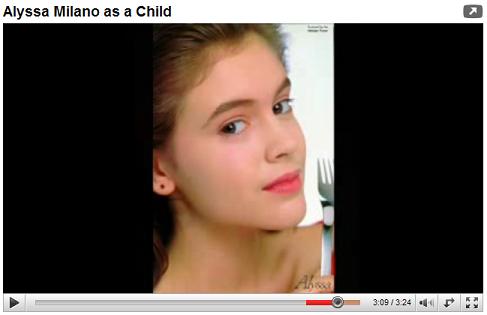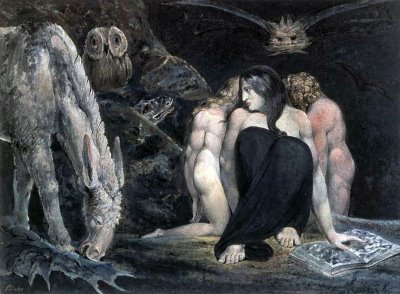"When you come to a fork in the road…"


The previous post (on "Come Swim") suggests a Sunset Boulevard review —
From a search in this journal for "consensual" —

"Yet if this Denkraum , this 'twilight region,' is where the artist and
emblem-maker invent, then, as Gombrich well knew, Warburg also
constantly regrets the 'loss' of this 'thought-space,' which he also
dubs the Zwischenraum and Wunschraum ."
— Memory, Metaphor, and Aby Warburg's Atlas of Images ,
Christopher D. Johnson, Cornell University Press, 2012, p. 56
Last two days of the conference, May 27 and 28, 2022 —
|
27th Friday
9:00 – 10:00 Andrés Villaveces (Univ. Nacional de Colombia):
10:00 – 11:00 Olivia Caramello (Univ. of Insubria; by Zoom): 1:00 – 11:15 Coffee Break
1:15 – 12:15 Mike Shulman (Univ. of San Diego):
12:15 – 1:15 José Gil-Ferez (Chapman Univ.) 1:15 – 2:30 Lunch
2:30 – 3:30 Oumar Wone (Chapman) :
3:30 – 4:30 Claudio Bartocci (Univ. of Genova):
4:30 – 5:30 Christian Houzel (IUFM de Paris): 28th Saturday
9:00 – 10:00 Silvio Ghilardi (Univ. degli Studi, Milano):
10:00 – 11:00 Matteo Viale (Univ. of Turin; by zoom): 11:00 – 11:15 Coffee Break
11:15 – 12:15 Benjamin Collas (RIMS, Kyoto Univ.):
12:15 – 1:15 Closing: general discussion |
The abstract arrows below in an image from yesterday’s Design post . . .
. . . are a background feature of the Castello Sforzesco website generally,
and not specifically of Corraini’s 2016 graphic design presentation.
The arrows apparently come from repetitions of this motif —
Similar arrow motifs appear at the castle’s main page —

Illustration by Pietro Corraini
Corraini design lecture on June 29, 2016 —
This journal on the same day —
| New Woke Stance
“The new Playboy claims to have moved away from the male gaze, but no matter how tasteful it may be, it is still relying on nudity. ‘We talk a lot about when something is objectification versus when it is consensual objectification versus when it is art,’ Singh said. ‘I think objectification removes the agency of the subject. ‘Consensual objectification is the idea of someone feeling good about themselves and wanting someone to look at them. Art means, O.K., we can hang this on a wall. And if it’s both, for us, that’s the major win.’ ” — Erica Tempesta for DailyMail.com, 2 Aug. 2019 |

"Four slashes of one size fits all.
It should not fit you."
— Alyssa Milano, "A Survivor's Prayer"
Milano's reference was to the hashtag symbol.
For another view of this symbol, see Pound Sign.
Some less popular "four slashes" art from Milan —

In her new spiritual memoir . . . .

Armies of the Night —

Armies of the Day —

Cole Porter —

Night and Day —

In memory of the translator of Foucault's Pendulum ,
who reportedly died on Tuesday, November 12th—
A detail from an image search (2 MB) linked to here
on that date:

See also Milano in this journal.
Wikipedia disambiguation page—

"When you come to a fork in the road…"

For another "shifting reality that shimmered
in a multiplicity of facets," see The Diamond Theorem.
On author Paul Fussell, who died today—
"Vincent B. Sherry, writing* in The Cambridge Companion
to the Literature of the First World War , called Mr. Fussell’s
book 'the fork in the road for Great War criticism.'"
— Christopher Lehmann-Haupt in The New York Times
"When you come to a fork in the road…"

* Actually, the writing was by James Campbell. Sherry was the book's editor.
See Campbell's "Interpreting the War," pp. 261-279 of the 2005 (first) printing.
The fork is on page 267.
Update of 9:26 PM— In the latest version of Lehmann-Haupt's article, the fork
has disappeared. But Campbell's writing is still misidentified as Sherry's.
(Where Entertainment is God, continued)
Related material— The Nexus (Jan. 8, 2010).
That post contains the following—
"A Nexus is a place equidistant from the five elements as explained in the TV series Charmed . Using this as a point of reference, it is quite possible that there could be several Nexus points of power scattered throughout the world, though rare."
— Nexus (Charmed) in Wikipedia
Happy birthday, Alyssa Milano.
For Alyssa Milano —

(Click here for cheesy Neil Diamond background music.)
For some related philosophical remarks, see Deconstructing Alice

and the new Pythagorean thriller The Thousand.
From Google News this evening–
Now Showing- “Alice in Wonderland”
Red and Black – Michael Prochaska
Tim Burton receives praise for his imaginative constructions
(“Nightmare Before Christmas” was inspired by a dream),
but if you analyze his work on adaptations of classic
children-oriented escapism, whimsical surrealism bears
a ball and chain.

A serenade for Einstein's birthday–
If you got it today you don't want it tomorrow, man,
'cause you don't need it, 'cause as a matter of fact,
as we discovered in the train,
tomorrow never happens, man.
It's all the same fucking day, man.
Google News at about 4:50 PM ET today–
Related material:
Alyssa Milano stars in
Embrace of the Vampire
See also March 6, "Alyssa Is Wonderland,"
today's previous post, and (for fans
of Seattle films and Lewis Carroll)
"Deep Play: Mimzy vs. Mimsy."
For young Andrew Cusack, should he ever care to read this journal.
Bertrand Russell and T. S. Eliot: their dialogue—
"The window of the room in which Eeldrop and Appleplex talk opens to a view which includes a police station. Again Eliot delineates the two men on the basis of thought– the divided mind. Eeldrop is entranced by 'the smoky smell of lilac, the gramophones, the choir of the Baptist chapel, and the sight of three small girls playing cards on the steps of the police station.'"
The story from which this is taken is "Eeldrop and Appleplex," by T.S. Eliot.
The "three small girls playing cards" suggest the three Fates. For a less subtle illustration, see William Blake's "Hecate, or the Three Fates"–

For a more cheerful (and Catholic)
Hecate figure, see the oeuvre of
Alyssa Milano.
Alyssa is Wonderland
Manohla Dargis in The New York Times yesterday—
“Of course the character of Carroll’s original Alice is evident in each outrageous creation she dreams up in ‘Wonderland’ and in the sequel, ‘Through the Looking-Glass,’ which means that she’s a straight man to her own imagination. (She is Wonderland.)”

From Inside the White Cube—
“The sacramental nature of the space becomes clear, and so does one of the great projective laws of modernism: as modernism gets older, context becomes content. In a peculiar reversal, the object introduced into the gallery ‘frames’ the gallery and its laws.”
From Yogi Berra–
“When you come to a fork in the road, take it.”
Related material: For Baron Samedi and…
Powered by WordPress